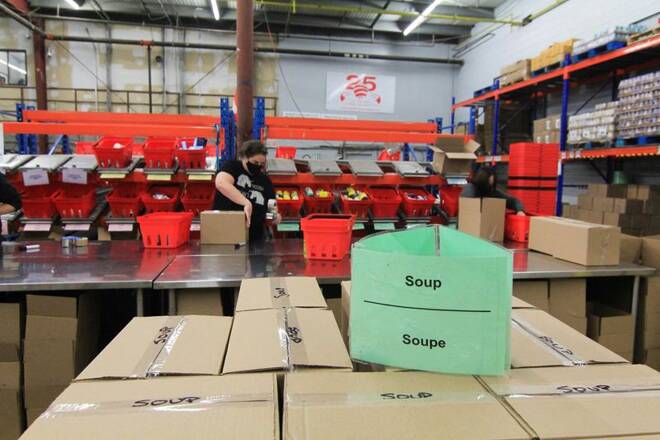Advertisement
Advertisement
Canada Feb inflation rate slowest in 13 months, backing up rate pause
By:
OTTAWA (Reuters) -Canada's annual inflation rate cooled more than expected in February, as a drop in gas prices and softer growth in shelter costs helped bring the consumer price index to its lowest level since January 2022, Statistics Canada data showed on Tuesday.
By Ismail Shakil and Steve Scherer
OTTAWA (Reuters) – Canada’s inflation rate slowed more than expected in February to its lowest level in 13 months, data showed on Tuesday, backing up the central bank’s plans to hold off on further interest rates hikes.
The annual inflation rate fell to 5.2% in February from 5.9% in January, the biggest single-month decline in almost three years, Statistics Canada said. That beat a median analysts’ forecast for a decline to 5.4%.
Excluding food and energy, prices rose 4.8% versus a year ago compared with a 4.9% increase in January.
The Bank of Canada left its key overnight interest rate on hold at the 15-year high of 4.50% earlier in March, and repeated that it would pause further rate increases if inflation came down in line with its forecasts, reaching its 2% target next year.
The inflation result “should probably keep the Bank of Canada on hold at the next meeting, assuming that the banking system continues to calm,” said Michael Greenberg, portfolio manager at Franklin Templeton Investment Solutions.
The collapse of two U.S. regional banks and the Swiss government-brokered deal for UBS to buy Credit Suisse have put a spotlight on stresses in the global banking sector that central banks must consider when setting policy.
Stephen Brown, deputy chief North America economist at Capital Economics, said the February reading suggests an average of 5.2% inflation in the first quarter, lower than the 5.4% the central bank forecast in January.
“In an environment where policymakers are able to ring-fence some of the financial contagion and we go back to an environment where we’re just looking at the fundamentals, this sort of CPI print is consistent with the BOC staying at 4.5% for all of 2023,” said Andrew Kelvin, chief Canada strategist at TD Securities.
Money markets largely see the central bank keeping rates unchanged at its next meeting on April 12, but due in part to the banking turmoil, they now expect the central bank’s next move to be a cut later this year.
“Overall, the Bank’s pause looks prudent, and we expect them to stay at current levels for quite some time, barring a major flare-up in the banking turmoil,” said Doug Porter, chief economist at BMO Capital Markets.
The headline number benefits from a comparison to last year’s strong price increase in February, Statscan said, and food purchased from stores rose 10.6% annually in February, marking a seventh consecutive double-digit increase.
Month over month, the consumer price index was up 0.4% compared with a forecast for a 0.5% gain. The average of two of the Bank of Canada’s core measures of underlying inflation, CPI-median and CPI-trim, came in at 4.9% compared with 5.1% in January.
Energy prices fell 0.6% on the year in February, led by the first yearly decline in gasoline prices since January 2021, while shelter costs rose at a slower pace year over year for the third consecutive month, Statscan said.
The Canadian dollar touched its strongest level since March 7 at 1.3645 to the greenback, or 73.29 U.S. cents, up 0.1% on the day, as the rout in global bank stocks subsided.
(Reporting by Ismail Shakil and Steve Scherer in Ottawa, Additional reporting by Dale Smith in Ottawa and Fergal Smith in Toronto; Editing by Bernadette Baum and Mark Porter)
About the Author
Reuterscontributor
Reuters, the news and media division of Thomson Reuters, is the world’s largest international multimedia news provider reaching more than one billion people every day. Reuters provides trusted business, financial, national, and international news to professionals via Thomson Reuters desktops, the world's media organizations, and directly to consumers at Reuters.com and via Reuters TV. Learn more about Thomson Reuters products:
Advertisement
